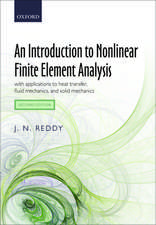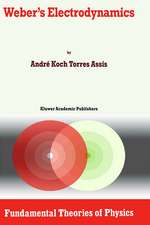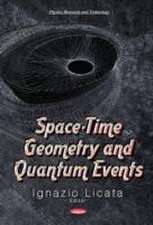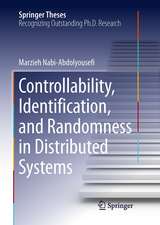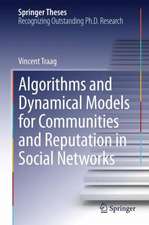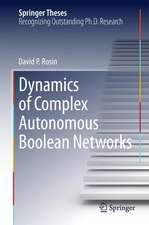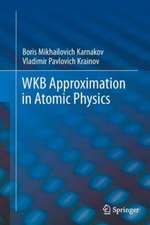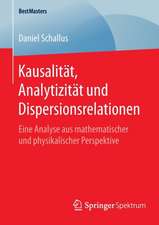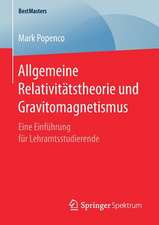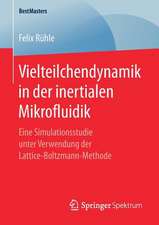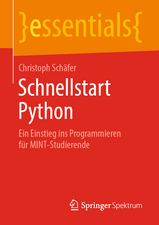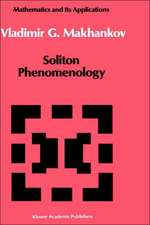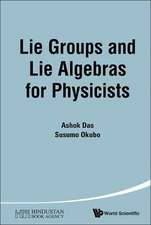Fluctuation Mechanisms in Superconductors: Nanowire Single-Photon Counters, Enabled by Effective Top-Down Manufacturing
Autor Holger Bartolfen Limba Engleză Hardback – 22 dec 2015
| Toate formatele și edițiile | Preț | Express |
|---|---|---|
| Paperback (1) | 645.60 lei 6-8 săpt. | |
| Springer Fachmedien Wiesbaden – 27 mar 2019 | 645.60 lei 6-8 săpt. | |
| Hardback (1) | 580.71 lei 38-44 zile | |
| Springer Fachmedien Wiesbaden – 22 dec 2015 | 580.71 lei 38-44 zile |
Preț: 580.71 lei
Preț vechi: 725.90 lei
-20% Nou
Puncte Express: 871
Preț estimativ în valută:
111.13€ • 115.60$ • 91.75£
111.13€ • 115.60$ • 91.75£
Carte tipărită la comandă
Livrare economică 08-14 aprilie
Preluare comenzi: 021 569.72.76
Specificații
ISBN-13: 9783658122454
ISBN-10: 3658122455
Pagini: 328
Ilustrații: XXI, 328 p. 91 illus., 90 illus. in color.
Dimensiuni: 168 x 240 mm
Greutate: 0 kg
Ediția:1st ed. 2016
Editura: Springer Fachmedien Wiesbaden
Colecția Springer Spektrum
Locul publicării:Wiesbaden, Germany
ISBN-10: 3658122455
Pagini: 328
Ilustrații: XXI, 328 p. 91 illus., 90 illus. in color.
Dimensiuni: 168 x 240 mm
Greutate: 0 kg
Ediția:1st ed. 2016
Editura: Springer Fachmedien Wiesbaden
Colecția Springer Spektrum
Locul publicării:Wiesbaden, Germany
Public țintă
ResearchCuprins
Preface - Vortex-Fluctuation and Single-Photon Detection.- Introduction.- Part I: Nanoscale Manufacturing Developments.- Considerations for Nanoscale Manufacturing.- Superconducting Thin-Film Preparation.- Nanoscale-Precise Coordinate System: Scalable, GDSII-Design.- Thin-Film Structuring.- Device Manufacturing.- Proof of Principle of the Above Described Approach.- Part II: Nanoscaled Superconductivity and its Application in Single-Photon Detectors.- Motivation for Part II.- Metallic and Superconducting States.- Fluctuation Mechanisms in Superconductors.- Static Electronic Transport Measurements.- Theoretical Models of Current-Induced Fluctuations.- Time-Resolved Photon- and Fluctuation Detection.- Concluding Remarks and Recent Nanowire Developments.
Notă biografică
Holger Bartolf studied Solid State Physics at the Universities of Karlsruhe and Zürich. In 2011 he relocated at the Swiss Corporate Research Center of a leading company in power and automation technologies where his current interests focus on the applied R&D of the next generation of power semiconductors.
Textul de pe ultima copertă
Holger Bartolf discusses state-of-the-art detection concepts based on superconducting nanotechnology as well as sophisticated analytical formulæ that model dissipative fluctuation-phenomena in superconducting nanowire single-photon detectors. Such knowledge is desirable for the development of advanced devices which are designed to possess an intrinsic robustness against vortex-fluctuations and it provides the perspective for honorable fundamental science in condensed matter physics. Especially the nanowire detector allows for ultra-low noise detection of signals with single-photon sensitivity and GHz repetition rates. Such devices have a huge potential for future technological impact and might enable unique applications (e.g. high rate interplanetary deep-space data links from Mars to Earth).
Contents
Holger Bartolf studied Solid State Physics at the Universities of Karlsruhe and Zürich. In 2011 he relocated at the Swiss Corporate Research Center of a leading company in power and automation technologies where his current interests focus on the applied R&D of the next generation of power semiconductors.
Contents
- Superconducting Single-Photon Detectors
- Nanotechnological Manufacturing; Scale: 10 Nanometer
- Berezinskii-Kosterlitz Thouless (BKT) Transition, Edge-Barrier, Phase Slips
- Researchers and students of physics in the fields of single-photon devices, nanofabrication, nanophotonics, nanoelectronics and superconductivity
- Industrial practitioners with focus on nanotechnology and single-photon detectors
Holger Bartolf studied Solid State Physics at the Universities of Karlsruhe and Zürich. In 2011 he relocated at the Swiss Corporate Research Center of a leading company in power and automation technologies where his current interests focus on the applied R&D of the next generation of power semiconductors.
Caracteristici
Superconducting cryogenic single-photon detectors are explained including analytical models of the detection mechanism and the historical development of low-temperature superconductivity is debated by numerous (
The mathematical formalism (
A unique and novel approach on how to manufacture high-quality nanoscaled devices which measure only a few hundreds of atoms
Includes supplementary material: sn.pub/extras
The mathematical formalism (
A unique and novel approach on how to manufacture high-quality nanoscaled devices which measure only a few hundreds of atoms
Includes supplementary material: sn.pub/extras

